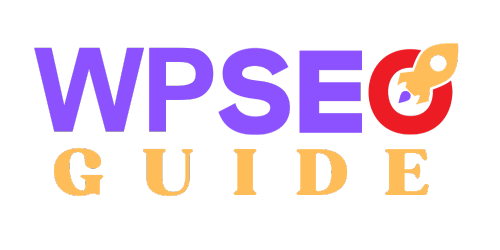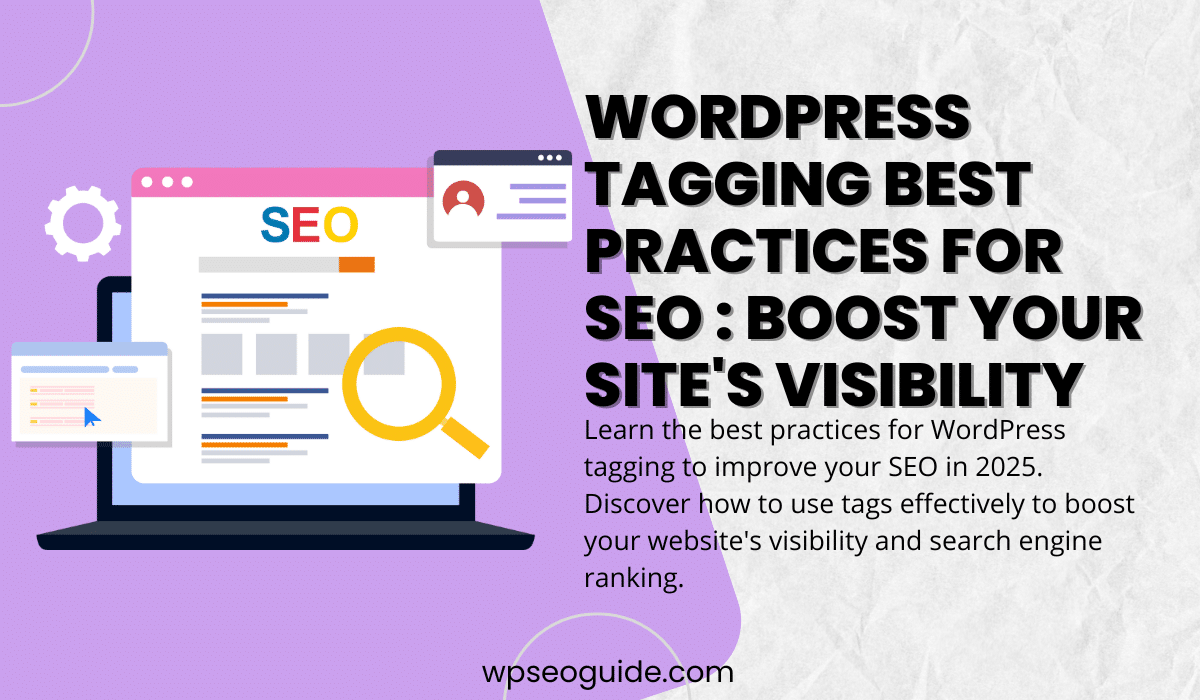WordPress tagging best practices for SEO . Learn how to optimize tags, avoid common mistakes, and boost your site’s search engine rankings
When it comes to search engine optimization (SEO) in WordPress, many people tend to focus on keywords, meta descriptions, and backlinks. While these are all important elements, an often-overlooked feature is the use of tags. WordPress tags are simple yet effective tools that can help improve your site’s organization and visibility. When used strategically, they can contribute significantly to your overall SEO efforts.
In this comprehensive guide, we’ll dive deep into WordPress tagging best practices for SEO, giving you actionable tips to implement and boost your site’s search rankings in 2025.
What Are WordPress Tags, and Why Do They Matter for SEO?
Tags in WordPress are keywords or phrases that group related posts together based on specific micro-topics. They help both users and search engines find relevant content more easily. Unlike categories, which organize content into broad themes, tags are more granular, pinpointing specific aspects of a topic.
For example, imagine you run a baking blog. A post on “Chocolate Cake” could be categorized under “Desserts” but tagged with more specific keywords like “chocolate recipes,” “gluten-free desserts,” or “birthday cakes.” These tags allow visitors to easily find similar posts, which enhances user experience (UX) and helps search engines understand the relationships between your posts.
Why Tags Matter for SEO
Tags serve multiple purposes when it comes to SEO:
- Content Organization: Tags improve your site’s internal linking structure, helping users navigate your content efficiently.
- Crawlability: Tags allow search engines to crawl and index your content better, which can positively affect your rankings.
- Improved Relevance: When used correctly, tags help signal to search engines what your posts are about, improving their relevance for certain search queries.
By incorporating WordPress tagging best practices into your strategy, you can make a positive impact on your site’s SEO.
WordPress Tagging Best Practices for SEO
1. Use Relevant and Keyword-Rich Tags
When it comes to tags, relevance is key. Tags should describe the specific details of your post. If you’re writing about SEO for beginners, tags like “SEO,” “WordPress SEO,” and “SEO tips” make sense because they accurately reflect the content. Using keyword-rich tags improves the likelihood of your posts appearing in search results when people search for those terms.
However, avoid generic tags like “technology” or “blogging,” as they are too broad and won’t bring value to your content. Use tags that are closely related to your focus keyword, like “WordPress tagging best practices SEO.”
2. Limit the Number of Tags
It’s tempting to add as many tags as possible, but this approach can backfire. Using too many tags dilutes their effectiveness and can create duplicate content issues. For example, when you have multiple tags that lead to similar tag archives, search engines might struggle to differentiate between them.
A good rule of thumb is to use 3 to 5 tags per post. This ensures that each tag serves a purpose and keeps your tagging organized. Overloading your posts with tags can confuse both search engines and your readers.
3. Avoid Duplicate Tags and Categories
One of the most common tagging mistakes is creating tags that duplicate categories. Categories should cover broad topics, while tags should focus on specific subtopics. For instance, if you have a category named “SEO,” you don’t need a tag with the same name. Instead, break it down into tags like “on-page SEO,” “technical SEO,” and “SEO best practices.”
Using both tags and categories effectively allows you to create a better site architecture and makes it easier for search engines to understand your content hierarchy. You can read more about categories and tags in WordPress for further insights.
4. Consistency is Key
Being consistent with your tagging strategy can help build internal linking opportunities and improve SEO. If you regularly publish content about WordPress SEO, use that tag across all related posts. This creates content clusters that search engines love, making it easier for Google to see the relationships between your content.
For example, if you publish articles about “SEO tools,” ensure you tag all related posts with that term. This consistency builds authority on the subject and improves your chances of ranking for that term.
5. Optimize Tag Pages
Most site owners forget that tag pages, like post categories, can also rank in search results. By default, WordPress creates an archive page for each tag you use. These pages can be optimized by adding relevant content, meta descriptions, and ensuring they don’t suffer from thin content issues.
If you decide to use tags actively, consider writing short introductions or adding unique content to these tag archive pages. This additional content can help search engines understand the focus of the page and rank it better.
Common Tagging Mistakes to Avoid
Even though tags are a helpful tool, they can be misused. Here are a few common mistakes you should avoid:
- Over-tagging: Overusing tags or adding irrelevant tags can confuse both search engines and your readers. Stick to the most relevant tags that accurately represent the content of the post.
- Single-use tags: Creating tags that are only used once doesn’t help SEO. Reuse tags across multiple posts to establish stronger interlinking.
- Ignoring tags completely: Some site owners ignore tags altogether, but they’re missing an easy opportunity to improve their SEO. Use tags strategically to increase visibility.
The Impact of Tags on User Experience
Aside from SEO, tags improve the user experience by helping readers find similar content more easily. If a visitor reads your article on SEO best practices, they might want to explore more posts on related topics, like “on-page SEO” or “SEO audits.” By using relevant tags, you can encourage visitors to stay on your site longer, which reduces bounce rates—a positive signal to search engines.
A well-organized tagging system can also lead to more page views, as users will be more inclined to explore your content based on their interests.
Learn more about how user experience (UX) and SEO are connected.
Outbound Links: Strengthen Your Content’s Credibility
One of the most important SEO practices is using outbound links to authoritative external sources. Linking to high-quality sites improves your credibility and signals to search engines that you’re providing valuable information.
For example, in this article, I’ve linked to WordPress’s official guide on categories and tags, which adds authority to the content. Make it a habit to include 1-2 outbound links per post, pointing readers to reputable sources.
Conclusion: Master WordPress Tagging for SEO Success
Tags are a powerful yet often overlooked feature in WordPress. When used properly, they help organize content, improve site navigation, and boost SEO. By following the WordPress tagging best practices for SEO, you can significantly improve your site’s search engine performance and offer a better user experience.
Remember:
- Use relevant, keyword-rich tags.
- Limit the number of tags per post.
- Avoid duplicating categories and tags.
- Keep your tagging consistent.
- Don’t forget to optimize your tag pages for better rankings.
Looking to learn more about improving your WordPress SEO? Don’t forget to check out our WordPress SEO Guide for 2024 for in-depth tips and tricks to rank your site higher.





